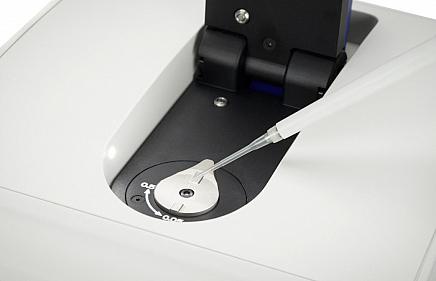In the realm of scientific innovation, microvolume spectrometers have emerged as invaluable tools, revolutionizing the way researchers analyze and quantify biological samples. These compact and powerful devices have significantly advanced the field of molecular biology, offering researchers unprecedented precision and efficiency in their analyses. In this comprehensive guide, we will delve into the intricate world of microvolume spectrometers, exploring their principles, applications, and the groundbreaking impact they have had on various scientific disciplines.
Understanding Microvolume Spectrometers
Microvolume spectrometers represent a technological leap in spectrophotometry, enabling researchers to analyze minuscule sample volumes with remarkable accuracy. Unlike traditional spectrophotometers that require larger sample volumes, microvolume spectrometers operate with sample sizes as small as 1-2 microliters. This reduction in sample size not only conserves precious samples but also allows for high-throughput analyses, making these instruments indispensable in modern laboratories.
Principles of Microvolume Spectrometry
At the heart of microvolume spectrometers lies the principle of absorbance spectroscopy. These instruments utilize light in the ultraviolet (UV) and visible (Vis) spectra to measure the absorbance of a sample at specific wavelengths. The absorption of light by molecules in the sample provides valuable information about its concentration and purity. Microvolume spectrometers employ advanced optical systems to achieve accurate measurements with minimal sample volumes.
Key Features and Advantages
Microvolume spectrometers come equipped with a range of features that contribute to their widespread adoption in research laboratories. These features include:
1. Low Sample Volume Requirements:
- As the name suggests, microvolume spectrometers require only small sample volumes, making them ideal for applications where sample quantity is limited or precious.
2. High Sensitivity:
- These spectrometers offer high sensitivity, allowing researchers to detect minute concentrations of nucleic acids, proteins, and other biomolecules.
3. Rapid Analysis:
- Microvolume spectrometers provide rapid analysis, reducing the time required for sample processing and allowing for more efficient experimental workflows.
4. User-Friendly Interface:
- Many microvolume spectrometers are equipped with user-friendly interfaces, making them accessible to researchers with varying levels of expertise.
Applications in Molecular Biology
Microvolume spectrometers have found extensive applications in molecular biology, playing a crucial role in DNA, RNA, and protein analysis. Researchers routinely use these instruments for:
1. Nucleic Acid Quantification:
- Microvolume spectrometers accurately quantify nucleic acids, facilitating applications such as PCR, qPCR, and next-generation sequencing.
2. Protein Concentration Determination:
- Protein quantification is essential in various biochemical assays, and microvolume spectrometers enable precise protein concentration measurements.
3. Cell Culture Monitoring:
- Researchers use microvolume spectrometers to monitor cell density and viability in cell culture experiments, ensuring optimal growth conditions.
4. Enzyme Kinetics:
- Studying enzyme kinetics often involves monitoring changes in absorbance over time, a task for which microvolume spectrometers excel.
Beyond Molecular Biology
The versatility of microvolume spectrometers extends beyond molecular biology, finding applications in diverse scientific disciplines:
1. Pharmaceutical Research:
- Drug development and quality control benefit from the accurate quantification of pharmaceutical compounds, a task streamlined by microvolume spectrometry.
2. Environmental Analysis:
- Researchers in environmental science utilize microvolume spectrometers to analyze water, soil, and air samples for pollutants and contaminants.
3. Food and Beverage Industry:
- The food and beverage industry employs microvolume spectrometers for quality control, ensuring the accurate measurement of components like sugars, fats, and proteins.
4. Clinical Diagnostics:
- Microvolume spectrometry is increasingly used in clinical laboratories for diagnostic purposes, providing rapid and reliable results for patient samples.
Choosing the Right Microvolume Spectrometer
With a plethora of microvolume spectrometers available on the market, selecting the right instrument for specific applications is crucial. Considerations include:
1. Wavelength Range: Ensure the spectrometer covers the required wavelength range for your intended applications.
2. Accuracy and Precision: Look for instruments with high accuracy and precision to obtain reliable and reproducible results.
3. Sample Compatibility: Check the compatibility of the spectrometer with the types of samples you work with, whether nucleic acids, proteins, or other biomolecules.
4. Software Capabilities: Evaluate the software provided with the spectrometer, ensuring it meets your data analysis and reporting needs.
Check Out the Latest Advancements
As technology continues to evolve, so do microvolume spectrometers. Researchers and scientists are continually developing and refining these instruments to push the boundaries of what is possible in the realm of molecular analysis. Stay updated on the latest advancements by exploring reputable scientific journals, attending conferences, and engaging with industry experts.
Conclusion
Microvolume spectrometers have undoubtedly transformed the landscape of molecular analysis, providing researchers with unprecedented accuracy and efficiency. From molecular biology to environmental science and clinical diagnostics, the applications of these instruments are vast and continually expanding. As you embark on your scientific journey, consider the capabilities of microvolume spectrometers and how they can enhance your research endeavors. For a closer look at the latest innovations in microvolume spectrometry, check out the leading manufacturers and their cutting-edge offerings. Your research deserves the precision and reliability that microvolume spectrometers bring to the table—check out the possibilities today.


No comments yet